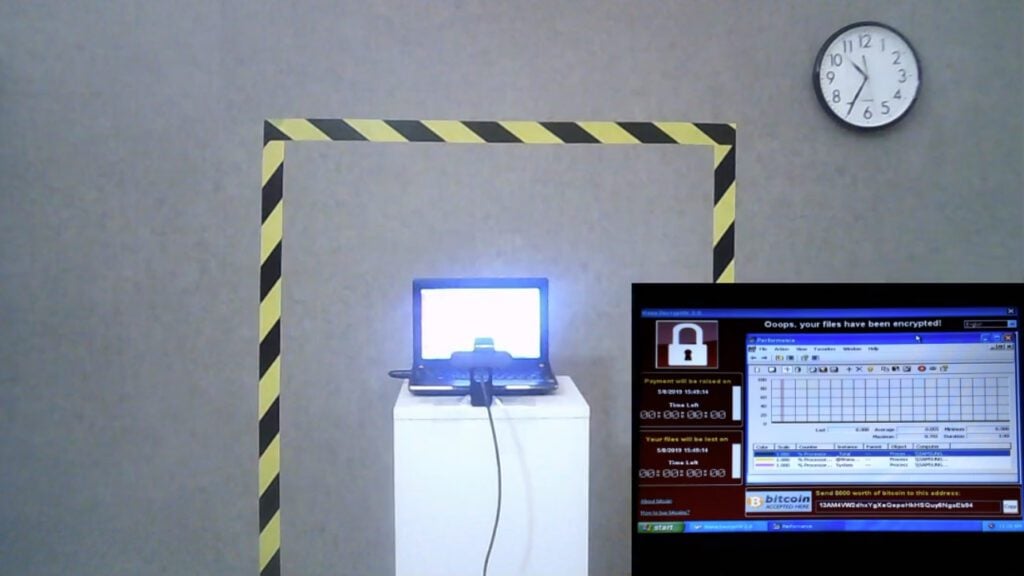Malware is short for malicious software. The term refers to any intrusive software created by Hackers to steal data and damage or destroy computers and computer mechanisms. But did you know that an old malware-infected computer was auctioned off at a high price?
A Windows XP computer that was infected with six different types of malware was sold at an art auction for about 1.3 million dollars back in 2019. One of the malware in the computer was the infamous ILOVEYOU virus from the year 2000.
The Laptop That Sold for $1.3 Million
The Persistence of Chaos was a collaboration between artist Guo O Dong and cyber-security firm Deep Instinct.
An anonymous bidder purchased the malware-infected 11-year-old Samsung notebook. The buyer has 24 hours to provide payment follow-up information under the auction terms.
Because the sale of malware is prohibited in the United States, whoever buys the laptop will only receive it after its ports and internet capabilities have been functionally disabled, according to the auction website. (Source: BBC)
What were the Six Strains of Malware in the Million Dollar Laptop?
The auctioned laptop had a total of six different malware strains, including the infamous ILOVEYOU Virus from the year 2000.
WannaCry
WannaCry is an example of crypto-ransomware. Ransomware accomplishes this by either encrypting valuable files so you can’t read them or locking you out of your computer so you can’t use them.
WannaCry holds your data hostage and promises to return it if you pay a ransom. (Source: Kaspersky )
ILOVEYOU Virus
The Love Bug, also known as Love Letter for you, is a computer worm that infected over ten million Windows personal computers on and after May 5, 2000.
The ILOVEYOU virus arrives in an email with the subject ILOVEYOU and an attachment that, when opened, causes the message to be re-sent to everyone in the recipient’s Microsoft Outlook address book. More seriously, it results in the loss of all JPEG, MP3, and other files on the hard drives of all recipients. (Source: Tech Target)
MyDoom
People worldwide began receiving mysterious emails in January and February 2004 that said: I’m just doing my job, nothing personal, sorry. Each email came with an attachment, and when people check their inboxes, they receive another copy. The MyDoom virus was to blame.
MyDoom is a highly effective worm that turns hundreds of thousands of computers into zombies. Hackers could then use each hijacked terminal to launch a denial of service (DoS) attack against a company they know. (Source: Okta)
SoBig
On January 9, 2003, the Sobig worm was discovered. The worm spreads via email and shared network drives. It also attempts to download other files from Geocities web pages. (Source: F-Secure)
DarkTequila
Dark Tequila is an advanced Trojan virus that collects data from infected computers. Dark Tequila has managed to avoid detection since its inception in 2013 due to its obfuscation and evasion measures and the fact that Dark Tequila attacks are very specific. (Source: Enigma Software)
BlackEnergy
The BlackEnergy malware was a trojan designed to launch distributed denial-of-service (DDoS) attacks, cyber espionage, and information destruction attacks via a Word document or PowerPoint attachment. In some cases, it arrived in the form of an email that appeared to be sent from the Ukrainian parliament. (Source: Industrial Cybersecurity Pulse)
